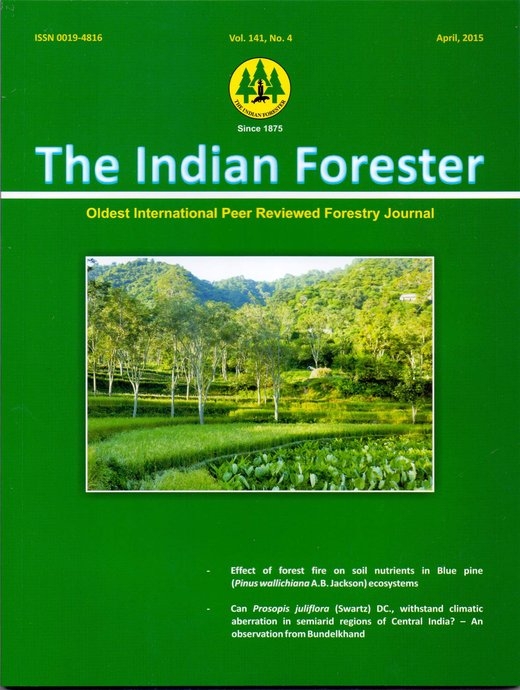Traditional Knowledge of Medicinal Plants in Narayanbagar Block, Chamoli District of Garhwal Himalaya, Uttarakhand, India
DOI:
https://doi.org/10.36808/if/2015/v141i4/68789Keywords:
Himalaya, Narayanbagar, Medicinal Plants, Traditional Knowledge.Abstract
The present study carried out in Narayanbagar block in Chamoli district of Uttarakhand in Western Himalaya to explore traditional knowledge of medicinal plants. Most of the local people depend on the forest and agriculture produce for their livelihood and daily needs. Informations on medicinal plants were collected through questionnaire survey, formal and informal interviews. Total 136 formal interviews from 22 out of 70 randomly selected villages were carried out. A total of 146 medicinally important plant species belonging 65 families were reported. Majority of collected species were herbs (73%), followed by shrubs (14%), trees (7%) ferns (3.42%) and climbers (2%). The botanical name, family, local name, parts used, and medicinal properties of collected plants documented.References
Bhat J.A., Kumar M. and Bussmann R.W. (2013). Ecological status and traditional knowledge of medicinal plants in Kedarnath Wildlife Sanctuary of Garhwal Himalaya, India.Journal of Ethnobiology and Ethnomedicine, 9:1.
Champion H.G., Seth S.K. (1968). A revised survey of the forest types of India. Manager of Publication, Govt. of India, p.404.
Farooquee N.A., Majila B.S. and Kala C.P. (2004). Indigenous knowledge systems and sustainable management of natural resources in a high altitude society in Kumaun Himalaya, India.J. Hum. Ecol.,16: 33-42.
Ghule S.T. and Patil D.K. (2001). Kisan world, 28(10): 33 - 34
Heywood V.H. (1995). Global biodiversity assessment. Cambridge, UK: Cambridge University Press, p. 75.
Kala C.P. (2002). Medicinal plants of Indian trans-Himalaya: Focus on Tibetan Use of Medicinal Resources. Bishen Singh Mahendra Pal Singh, Dehradun, India, p. 200.
Loreau M.and Oteng-Yeboah A.(2006). Diversity without representation. Nature, 422:245.
Mukherjee P.K. (2005). Exploring green resources for drug development through ethnobotany. In:Chemistry for green environment. New Delhi: Narosa Publishing House, p. 98.
Naranjo P. (1995). Urgent need for the study of medicinal plants.In:Ethnobotany: evolution of a discipline. Portland: Dioscorides Press, p. 392.
Peel M. C., Finlayson B.L and McMahon T.A. (2007) Updated world map of the Köppen-Geiger climate classification, Hydrol. Earth Syst. Sci. Discuss, 4:439-473.
Shinwari S.K. and Gilani S.S. (2003). Sustainable harvest of medicinal plants at Bulashbar Nullah, Astore (Pakistan). J. Ethnopharmacol, 84:289.
Shiva V. (1996). Protecting our Biological and Intellectual Heritage in the Age of Biopiracy. The Research Foundation for Science, Technology and Natural Resources Policy, New Delhi, India.
Utkarsh G. (2001). Patenting life?Biodiversity and intellectual property rights. Resonance, 2: 51-56.
Downloads
Downloads
Published
How to Cite
Issue
Section
License
Unless otherwise stated, copyright or similar rights in all materials presented on the site, including graphical images, are owned by Indian Forester.





